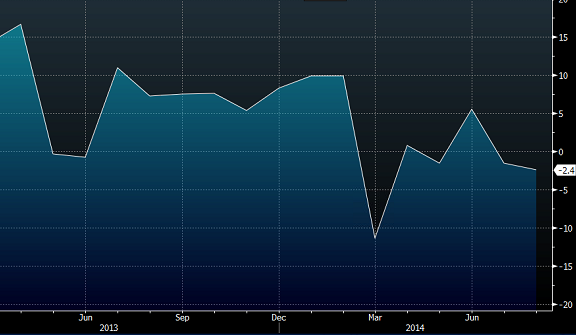Why the slowdown in China might be real
The overarching theme in trading this week is fear that China is slowing down.
Well, that’s not actually true. The market doesn’t really mind slower economic growth; US growth has missed growth forecasts every year since the crisis. What the market doesn’t like is soft economic data and no plan to fix it.
Markets dislike bad news in the same way children dislike green leafy vegetables… grudgingly. They don’t start kicking and screaming until you refuse to give them candy. For markets, that candy is stimulus from the government or central bank.
Last week, Chinese Premier Li re-committed to economic reform rather than economic stimulus even with signs mounting of a slowdown.
“Instead of adopting strong economic stimulus or easing monetary policy, we have vigorously promoted reform and economic readjustment, and made efforts to improve people’s lives,” he said.
If you get a chance, read his speech from last week. It’s abundantly clear that he’s focused on reform and structural issues rather than economic data or making sure GDP hits the 7.5% target. He believes that by sacrificing some near-term growth and cleaning up some of the worst abuses and loosest money that it will prevent a hard landing down the road.
And don’t expect help from PBOC leader Zhou. The latest reports say the central bank is reluctant to cut rates even if the economy is slowing.

The Great Wall may not be as sturdy as advertised
The real question is: How much is the economy slowing? The attention-grabbing number is the soft reading on industrial production (+6.9 y/y vs +8.8% exp) but looking closer it might not be so bad. Year-to-date numbers on industrial production were at 8.5% y/y compared to 8.8% exp. The difference between that and the vanilla y/y figure might have simply been some kind of seasonal skew.
Some other data has been non-frightening. Retail sales were at 11.9% y/y compared to 12.1% expected. Both the private and official manufacturing PMIs have been solid.
From where I stand, the real fears started with the import/export data. I believe Chinese importers are some of the most-savvy economic bellwethers. These are the people making decisions at the very dawn of the global manufacturing cycle as they bring raw materials to China that will eventually be manufactured into products.
When they see problems coming, they quickly adjust orders. And the latest data showed August imports down 2.4% compared to a 3.0% rise expected. There’s some talk that a soft domestic economy is the reason.

Chinese imports down y-y in 4 of past 6 months
Add in signs of trouble in other emerging markets — Brazil is in a technical recession — and this could be the start of a real shakeup. Maybe that’s what the swift fall in the Australian dollar is trying to tell us.
Ultimately, worrying about China is a very difficult pastime. In the past 7 years there has been a near-constant drone of China worries that has never amounted to anything. It’s not time to panic, or even to change course but it’s time to watch a bit more closely.



